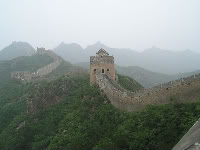China’s Energy Push – Guest Blogger Kathy Heshelow


The Wall Street Journal reported on March 15th, 2010 that Chinese state-owned oil company Cnooc Ltd. is taking a 50 percent stake in Argentina’s Bridas Energy Holdings for $3.1 billion. Cnooc is the Hong-Kong listed unit of China National Offshore Oil Corp. It will finance the joint venture through “internal sources,” and the project is expected to move along quickly. The reserves of Bridas include an estimated 636 million barrels of oil; the company has activities in Argentina, Bolivia and Chile.
Chinese Momentum
The major Chinese state oil companies are China National Petroleum Corp. (CNPC), China Petrochemical Corp (Sinopec), the aforementioned Cnooc and PetroChina. These companies have been chasing down contracts around the world and have made acquisitions in such countries as Angola, Azerbaijan, Canada, Chad, Indonesia, Chad, Iraq, Iran, Kazakhstan, Myanmar, Nigeria, Peru, Russia, Singapore, Saudi Arabia, Sudan, Turkmenistan, Uzbekistan, Venezuela and now Argentina. They have been locking in resources, supply agreements and infrastructure deals.
Significant Deal in Iraq
China recently signed a deal in southern Iraq to develop the 2.5 billion barrel oil field called Missan. Winning oil deals in Iraq is extremely difficult. But in fact, in 2008, China was the first foreign country in 35 years to make an oil deal with Iraq. At that time they signed a whopping $55 billion dollar, 22-year deal, which was considered very significant. This transaction put the world on notice that China was in serious pursuit of oil for its massive energy needs. In the 2008 deal, China will not apparently share in profits with Iraq.
There have been signs that China understands that petroleum is finite and will not last forever, and their aggressive focus on the renewable world is part of their long-term plan. Meanwhile, pursuing oil deals has been aggressive too. They have cash, they have the will and they seem to be succeeding in seeking and locking up energy of every source.
Needs Gap
China has been worried since 2007 when they experienced oil shortages and prices shot up. In response, China invited foreign investment inside their borders to build an oil infrastructure and six countries jumped in. China’s energy consumption has been rapidly increasing, with no signs of slowing. The gap between what they produce and what they consume has widened, says the Energy Information Agency (EIA). China is the world’s second largest consumer of oil after the United States. See the chart below, courtesy of the EIA, which illustrates this gap.
China Travels the World to Lock Up Oil
To understand the scope of their efforts, review some of the deals and transactions that China has made in the last few years (collected from various news sources):
- Last week, Cnooc joined with large French oil company, Total SA, to acquire access to oil in Uganda.
- In December 2009, Cnooc developed a deal in Venezuela for the oil block in the Orinoco belt.
- In spring of 2009, China announced construction in Myanmar of an oil and gas pipeline to southwest China. It also secured a 30-year deal for natural gas off the coastline of Myanmar.
- Iran supplied 11% of China’s imports by mid 2009. Sinopec made an agreement seemingly worth more than $70 billion dollars in mid 2009, one of the biggest energy deals by an OPEC member. China agreed to develop a large oil field over the next 30 years, and buy 275 million tons of LPG during that time. In addition, Iran agreed to export 150,000 barrel of oil per day at market prices for 25 years. According to analysts, Iran could become the 2nd largest supplied to China after Saudi Arabia as early as 2012.
- China has dealt with Sudan in an “oil for guns” program, with China owning 40% of the Greater Nile Petroleum Operating company (a dominant force in Sudan). By summer of 2009, China had invested about $8 billion in the oil sector there, including building a tanker terminal and some pipeline infrastructure. It is the largest foreign investor in the country
- In 2008, a large deal was penned between Russia and China. The agreement was for a Siberia – Pacific Ocean pipeline deal. The pipeline will run from the Skovorodino refinery in Russia’s east to China. At time of the transaction, the Russian Deputy Prime Minister said the agreement “creates a new foundation for developing our energy cooperation.” The pipeline will have a capacity of 15 million metric tons of oil per year and China agreed to give $25 billion in loans. A 20-year contract to pump Russian oil to the China market was included. Then Prime Minister Putin believed this would give Russia a stable and reliable market for its oil, while China would get an assured inflow.
- Since May 2008, China has been investing in Venezuela’s oil sector through PetroChina.
- Cnooc purchased a 45% stake in major oil and gas fields in the Niger Delta in 2008. Nigeria is a large supplier to the U.S. and there could be some competition for supply, say analysts. (Journal of Energy Security. “China’s Oil Supply Dependence”, by David Hayward. 18 June 2009). In addition to the oil deal, China provided military assistance to Nigeria (jets and patrol boats).
- In 2008, China was given oil exploration rights in Niger.
- China started developing partnerships with Saudi Arabia in 1999; Sinopec would cooperate with Saudi ARAMCO to develop fields in Saudi while ARAMCO would invest in refineries and plants in China. By 2003, ARAMCO became part owner in a petrochemical complex in China. And the cooperation has continued.
- China has been buying oil fields in Kazakhstan.
- China has also been active in the Caspian Sea dating back to 1997, with some delays of work. A pipeline may be complete by 2011, and China agreed to 20 years of development aid to a Kazakhstani oil firm after buying 60% of it.
- Nigeria signed an oil exploration deal in Kenya in 2006.
- After Angola ended its civil war in 2002, China rushed in offering a loan to rebuild the infrastructure, and gain oil.
More on this tomorrow.

[…] renewable energy plan , and an overall energy plan. As I guest wrote on Craig Shield’s good blog 2Green Energy, China recently has made a number of oil and gas deals in what could almost be called a frenzy. […]